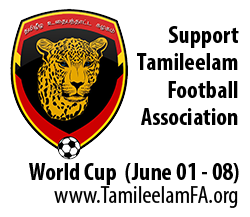Archive for the ‘Tamil History/Culture’ Category
UTSG TSA 2014 THAI PONGALBy Admin - January 8th, 2014 |
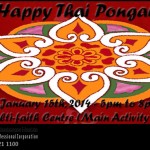 |
|
Inniya Thai Pongal Vazhthugal! Happy Pongal everyone! UTSG TSA is thrilled to celebrate this very important Thamil festival! Thai Pongal is a traditional thanksgiving event to celebrate another successful harvest season. Join us on Wednesday January 15th from 5pm-8pm at the Multi-Faith Centre for FREE FOOD, PERFORMANCES, GAMES and FRESHLY MADE PONGAL!!! Get the chance to learn more about Thai Pongal and its significance to the Thamil community! You don’t want to miss out! |
5th Annual Tamil Heritage Month (2014) Opening ReceptionBy Admin - January 5th, 2014 |
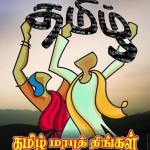 |
|
The launch (opening ceremony) of Thamil Heritage Month will be on Thursday, January 9th at 6pm at Markham Civic Centre. At the event, we will publish the official poster, calendar of THM 2014 events and handbook. We will also be launching the THM website and presenting the various proclamations from different municipalities. Refreshments will be served. Admission: Free (space limited and therefore RSVP required, please rsvp to info@tamilheritagemonth.com before January 6th) We encourage everyone to wear cultural attire for the event. Thanks, |
What is Thai Pongal?By Admin - January 5th, 2014 |
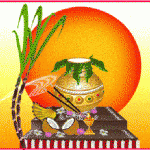 |
|
What is Thai Pongal? Thai Pongal is a four-day long harvest festival where individuals offer thanks to nature for providing grain, the basic staple of the food chain. The etymology of Thai Pongal can be traced to the meaning of its root words “pong” and “thai,” which mean “to boil” and “January” in Thamil. Thai Pongal marks the first day of a new year, and a new month of the Thamil calendar. On this day, farmers will thank nature, especially the Sun and the farm cattle for their allowing them to reap a bountiful harvest, and will harvest new crops including rice, cereals, sugar cane, and turmeric for the next season. A dish of Pongal is also prepared using freshly harvested rice by farmers, the pot of rice, milk and jaggery (pongal) is set to boil until it boils over the pot in beliefs that doing so will result in a bountiful year. Thai Pongal will be celebrated on January 14 this year. What is Maatu Pongal? Maatu Pongal is a celebration that follows Thai Pongal in which farmers honour their cattle for its hardwork by giving it a bath and adorning it. Who celebrates Thai Pongal? Thamils all over the world celebrate Thai Pongal by giving thanks to nature, making special dishes, giving gifts to family, and dressing up in new clothing. It is a cultural holiday and festival, thus it is celebrated by all Thamils. What is the significance of Thai Pongal? Thai Pongal is a highly socially significant holiday to the culture and tradition of the Thamil people. Thai Pongal is a day in where farmers thank nature for its bounty, and harvest a new set of crops for the new season. It marks the beginning of a new season, and beginning. Furthermore, the month of Thai has traditionally been the month in where most weddings are held. The Thamils have traditionally been an agrarian society, as a result, the months of plentiful harvest was the months in which resulted in the greatest economic output. Thai being such a month meant that more families were able to bear the expenses of holding a wedding. New Beginnings Many believe that with the onset of a New Year, better pathways and beginnings will follow, thus the common phrase, “Thai piranthaal, vali pirakum.” This post is part of the Tamil Heritage Month Initiative. Tamil Heritage Month began in 2010 and seeks to celebrate Tamil heritage, culture, and history. Throughout this month and January, we will be providing you with educational material and poetry such as this that seeks to help us celebrate and understand our culture, roots and heritage. |
A Cup of GreetingsBy Admin - January 4th, 2014 |
 |
|
Written By: Renishaki Kamal My feet scurry down the steps to turn the knob and welcome the faces that have yet to lose their secrecy. This post is part of the Tamil Heritage Month Initiative. Tamil Heritage Month began in 2010 and seeks to celebrate Tamil heritage, culture, and history. Throughout this month and January, we will be providing you with educational material and poetry such as this that seeks to help us celebrate and understand our culture, roots and heritage. |
To FamilyBy Admin - December 23rd, 2013 |
 |
|
Written By: Kayalvizhi J. When my brother was a child his word was ‘Akka.’ He would say Akka in this super cute way. With his chubby cheeks and bubbly self, he was the cutest little brother anyone could have. Yesterday, I told him a few of the many stories of him as a baby – from the way he would imitate Rajanikanth punch dialogues, to the way he would always cry to be held if he saw my sister or I, and of time he would hide behind us if he was afraid. Now that he is a grown teenager, far taller than me, he laughs when we tell him these stories. Last night, my father, my mother, my brother and I stayed up just rehashing these old family memories – and I must say, it was very enjoyable. It was really something we did because my dad could not watch TV, my mom could not cook, my brother could not play his video games, and I could not use my laptop. While the blackout was a huge inconvenience, it brought us all together. We sat and talked, and had a good time doing so. Technology has become such a huge part of our lives that our reliance on technology has divided us. We are all electronically connected through social media, but our face-to-face interaction has decreased. Spending time with family is important. The bond of family, culture, and values can only survive through family time, and we need to make undivded time regularily to spend with our families. We sometimes forget that in the end, we work to spend quality time with family, but we work too hard that we don’t spend enough time with our loved ones. There is nothing that brings people together like a crisis. The togetherness of family, the care and love everyone has for one another is most evident in times of crisis. The way a relative cares for whether you ate, the way a friend calls to see whether you have a safe place to sleep, all show you that you have people who love and care for you. We often take for granted the good people we have in our lives, but in times of crisis, we see who cares really. While this storm brought down electricity, heat and water, it brought with it gave us something invaluable – a provided us an opportunity to show our families and friends how much we care. It provided us an opportunity to bond with our families. Christmas has always been a big deal in my family, but this year, I feel like the blackout has brought together the real spirit of Christmas – family and love. |
The Permanent Peoples Tribunal’s Latest Landmark DecisionBy Admin - December 23rd, 2013 |
 |
|
Written By: Athithan Kurukulasingam On December 11, 2013 a panel consisting of 11 high profile judges passed a judgement ruling that Sri Lanka had indeed committed the crime of genocide against the minority Tamils. The 11 member panel which was part of the Permanent Peoples Tribunal (PPT) also went on to declare that the United States and United Kingdom were also ruled to have been found guilty of complicity to this crime (Veerasingam, 2013). The fact that such a high profile tribunal came out with a conclusion of genocide should not go unnoticed. For years, Tamils all over the world have been calling out for an independent investigation by an accredited third party into the allegations of war crimes, unfortunately for the most part our cries have gone unnoticed. The Sri Lankan government also refused to cooperate and still refuses to cooperate to this day. This recent ruling should work favourably in our plight because it forces the hands of many of the great powers all over the globe. It can be argued that the most shocking aspect surrounds the second part of the ruling. The United States and the United Kingdom have been found guilty of complicity to the crime. For those of you who aren’t too familiar with this notion, complicity is defined in this situation as ” procuring means, such as weapons, instruments or any other means, used to commit genocide, with the accomplice knowing that such means would be used for such a purpose; complicity by knowingly aiding or abetting a perpetrator of a genocide in the planning or enabling acts,” (Veerasingam, 2013). The cries of our people were for so long left unheard. Time after time, we were left with empty promises . While the world stood by, our people died on mass. This ruling not only is a smack in the face for all the democracies around the world, it also can carry legal ramifications to the countries involved. By committing complicity, these two great powers of the world did their part in the genocide that took place. India has long been accused of doing their part in the genocide and their involvement is still under investigation by the PPT. The blood of all our brothers and sisters are now also now on their hands as well and it is only a matter of time before all the perpetrators are brought to light. I find that there is always a silver lining to situations and this recent ruling is no exception. Fundamental beliefs and core values of people usually never change and for the most part they stand by those very standards. The European Union (EU) and the United Nations (UN) although considered organizations are in fact made up of people like you and I and do have their own fundamental moral beliefs and values. For long, they have failed to protect the people of the world, Rwanda and Sri Lanka being just being two examples amongst the many. However, they now have the ability not to make up for their past mistakes but rather they can make sure nothing like this ever happens again. Even to this day, Tamils in Sri Lanka are facing humanitarian problems and crimes against humanity are still taking place. The EU took a corrective measure in this monumental problem. “The EU has passed a resolution that states the United Nations should initiate an international investigation into allegations of violations of international humanitarian law, if Sri Lanka fails to start one itself, before March 2014” (Tamil Guardian, 2013). This ruling works favourably with the recent incidents that took place at the Commonwealth Summit in Sri Lanka. England’s Prime Minister chose to pressure the Sri Lankan government into allowing a credible and independent investigation into what happened in the past. These kind of rulings and resolutions are what the activists for change have been calling for. What we are now seeing is a new shift in thinking from the international community. It is my belief that change does not take place overnight, steps have to be both calculated and effective. In order to bring change you have to continue to push the matter. You can’t stand on the sidelines and expect to lead a team. You have to be both active and involved. Now is the time for the international community to take further initiative. These recent landmark rulings have the international community on edge, they no longer can’t deny the claims to genocide. Their backs are against the wall and it is up to fellow Tamils all around the world to push forward. I have long held the opinion that the students are our future. The more we continue to push forward the more we can accomplish. It is up to us to be the change we wish to see in the future. “The most important kind of freedom is to be what you really are. You trade in your reality for a role. You trade in your sense for an act. You give up your ability to feel, and in exchange, put on a mask. There can’t be any large-scale revolution until there’s a personal revolution, on an individual level. It’s got to happen inside first.” Bibliography Tamil Guardian. (2013, December 13). EU Parliament sets March 2014 deadline. Retrieved December 13, 2013, from Tamil Guardian: http://www.tamilguardian.com/article.asp?articleid=9489 Veerasingam, R. (2013, December 11). Sri Lanka guilty of genocide against Tamils with UK, US complicity: PPT rules. Retrieved December 16, 2013, from JDS: http://www.jdslanka.org/index.php/2012-01-30-09-30-42/human-rights/426-sri-lanka-guilty-of-genocide-against-tamils-with-uk-us-complicity-ppt-rules |
The Great Raja Raja CholanBy Admin - December 19th, 2013 |
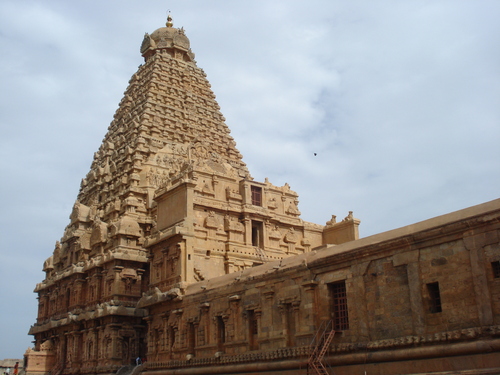 |
|
This post is part of the Tamil Heritage Month Initiative. Tamil Heritage Month began in 2010 and seeks to celebrate Tamil heritage, culture, and history. Throughout this month and January, we will be providing you with educational material and poetry such as this that seeks to help us celebrate and understand our culture, roots and heritage. Written By: Kayalvizhi J. Rajaraja Cholan was one of the greatest kings of the Chola Empire who ruled between 985 CE and 1014 CE. Rajaraja Cholan and his son, Rajendra Cholan have been credited with the expansion of the Chola Empire by virtue of winning land through military battles against the Sinhala and Pandaya armies. His strength, valour and power has been celebrated in Tamil literature, movies and songs. Some of his greatest achievements, the building of the Raajarajeswaram in Thanjavur, still remain as one of the most amazing architectural achievements to date. The Raajarajeswaram in Thanjavur is now regarded by UNESCO as a World Heritage Site. The construction of the temple was completed on the 27th day of the 25th year of Rajaraja Cholan’s reign. Rajaraja Cholan was named Arulmozhi Varman at birth. His name became Rajaraja Cholan (Great King) with the victories he won in battle. He was the third son of Parantaka Sundara Cholan and Vanavan Mahadevi. Rajaraja His elder brother, Aditya II was assassinated, although the circumstances surrounding that are unclear. According to inscriptions on the Thanjavur Temple, his only known son is Rajendra Cholan. Brihadeeswara Temple built by Raja Raja Chola I in 1010 A.D. A lot of what we know today, we have read or heard about – but many of it comes from records he left himself. Rajaraja Cholan was a King who understood the value of a recorded history and brought about standardized inscriptions. He recorded all of his military achievements and important events in gold, copper and stone inscriptions. He is credited as the first king of South Asia to do so. Even the past Pallava, Pandhya and Chola dynasties failed to leave a record of their military achievements in stone. His successors have all followed suit in leaving behind a recorded history of their military achievements. Rajaraja Cholan was also instrumental in retaining past historical information and the records of his predecessors. An inscription found at Tirumalavadi notes that Raja Raja Cholan ordered the inscriptions from central shrine in the Vaidyanatha Temple should be recorded in a book and re-inscribed after it was being rebuilt. Rajaraja Cholan also issued that all donations and grants made to the Thanjavur Temple, a temple build during his reign, be engraved in the stone. Rajaraja Cholan Status ManimandapamRajaraja Cholan was a King tolerant to the religious practices of others – although he was a follower of Lord Siva, he has constructed Vishu Temples, the Buddhisht Chaudamani Vihara. His sister, Kundavi, built a Jaina Temple, the Kundavi Devi Jinalaya. His sister Kundavi was regarded highly among him, and Rajaraja Cholan had much admiration for her. She was married to a Bana Price, Vallavaraiyan Vandiyadevan. Rajaraja Cholan is also widely regarded for his administrative practices. He brought into a system of audit and control that was governed by village assemblies and public bodies. Through his policies, administration and accountability were brought about. His organization also carried on to creating one of the most powerful standing armies and navy. His son, Rajendra Cholan was named supreme commander of the northern and northwestern dominions of the Chola Empire. Rajaraja Cholan engaged in many conquests, some of his last being his naval conquests in the sea, Maldives and neighbouring regions. The influence of Tamil dominance can still be seen in some of the islands today. For examples, some of the islands in Indonesia, which were once conquered by Rajaraja Cholan have Tamil names: Aru, Natuna=middle, Banda=Pandyan, Pahlawan=Pallavan, Zulu=Chola, Rajaraja Cholan was a widely respected and regarded King by his subjects. His valour, power and expansion of the Chola Empire brought him much admiration. He has been referred to by other names including Abayakulasekarar (one who has a lot of groups who have surrendered before him), Azhagu Cholar (the most handsome Chola King), Ravikulamanikam (the King like a Ruby), Sanda Parakramar (The King with the power of Wind), Nigarili Cholar (The Chola King without comparable Kings), Panditha Cholar (the Chola King who is complete with knowledge) and Jayamkonda Cholar (The King who is always victorious). Rajaraja Cholan continues to be a person of interest to Tamils, he has been the subject of many books and dramas. Including movie, Rajaraja Cholan by Shivaji Ganesan, Kalki’s literary masterpiece, Ponniyin Selvan with Arulmozhi Varman as the protagonist, Sujatha’s Kandalur Vasantha Kumaran Kathai, Seshadri’s Raja Kesari, and many more. |
Thangachi’s Corner – Tamil titles: yes or no?By Admin - December 18th, 2013 |
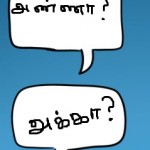 |
|
December 18, 2013 Updated every other Wednesday, “Thangachi’s Corner” is a bi-monthly feature that discusses relatable topics and issues relevant to the Canadian Tamil youth of today. For more information about this feature or to suggest a topic, feel free to e-mail us at blogs@ctya.org! Written By: Keerthana Raveendran I have been “Thangachi” for as long as I can remember. In fact, my parents were so keen on my brothers and me using these kinds of respectful Tamil names that they would address us the same way, just to make sure it caught on in our young minds. It was always fun when we’d go to parties and my mom would call out ‘Anna’. While some folks would expect an older figure to respond, it was always a little boy who’d turn his head. These names continued to stick with us as we grew up, and it came to the point in which we felt far too awkward addressing one another by name, even when we were in public or in the midst of a large crowd. I’m sure a lot of you can relate. Respectful titles for immediate family members, and tag-ons for extended family (that is, “insert name here” sithappa, and such) are very much an integral part of our Tamil culture. We use these titles to demonstrate reverence for the older generation and endearment towards the younger one. They are one-word connections with our heritage, linking us to our past even in our everyday interactions. But I’m finding more and more in my contact with younger kids at Tamil community events that this particular tradition has been slipping. Maybe it’s a sign that I am no longer a part of the younger generation and that I have officially become stodgy. Or maybe this just isn’t common practice in today’s age. After all, I get it—we tend to meet people in Anglophone settings and sometimes you never know right off the bat whether the person you just met is older than you. But I daresay a ten-year age gap is fairly obvious. And I don’t know about you, but I feel an odd sense of offense when obviously younger kids address me by my name. It’s an inexplicable sentiment, and I honestly could not tell you why I feel strongly about the use of Tamil titles, other than for an arbitrary notion of respect. Perhaps it’s a mere exercising of what I’ve been exposed to my entire life, and it begs an answer to the question of whether we are conditioned to accept the concept of respect as practiced by our ancestors. Or are we just holding onto a tradition we shouldn’t expect our young to follow? What do you think? Tamil titles: yes or no? About the Author: Keerthana Raveendran, known by her flock as Thangachi, is an aspiring author whose motivation to write usually kicks in when she’s supposed to be occupied elsewhere. She is an avid procrastinator who sees potential novel ideas as movies in her head. Maybe one of these days they’ll make it onto the page. Thangachi is currently a Masters student studying English at York University. Read More by Keerthana! |
What’s in a name?By Admin - December 6th, 2013 |
 |
|
Written By: Kayalvizhi J. You probably hear it more than anything else, you either love it or hate. You never use it yourself, but everyone else uses it. What is it? That’s right, your name. Names are a significant part of a person’s identity. In giving children personal names, Tamils are known to follow uncommon practices. Although not practiced widely today, traditionally Tamil names were not just given lightly – a child had to be named within 12 days of birth, there was an appropriate number of syllables a name could have based on the time of birth, the final syllable of the name followed a phonetic structure, and certain names and letters were to be avoided. Tamils also chose personal names which conveyed a desirable semantic quality – such as power, happiness, success, prosperity, beauty, victory, greatness or devotion or a highly esteemed abstract quality – such as sathiyam (truth) or azhagu (beauty). The second part, or ending of a name usually is also derived from a common suffix with such qualities. For example, durai (lord), rajan (king), devi (lady), vati (lady) are all common suffixes. The devotional name is also a popular one – they have taken such prominence that people have forgotten what the name itself means, and only what God or Lord it represents – for example, Murugan means handsome male, however many only know it as Lord Murugan. Tamils also have in the past named based on non-Tamil historical figures paired with a name of Tamil relevance – such as Lenin Kumara-Samy. Other rules also applied when choosing a name for a child, such as the first two males of a family are named after the grandfathers and the first two daughters are named after the grandmothers. In fact, the Tamil word ‘peran’ meaning grandson has been derived from this fact ‘per name’ peran actually means the boy who bears the name, and ‘pertti’ means the girl who bears the name. We however, have been moving away from choosing names of Tamil relevance to other names. With Tamils choosing now to give children shorter names and more Anglo-Saxon names because they believe it is more convenient and employable (Krishnan becoming Kris). But doing so, we will loose the Tamil name our children have – which also includes part of their identity. We should bring back family names that retain our culture, and we should name our children after significant Tamil figures.In fact, Tamils are one of the only indigenous groups that derive names from other cultures as well, we borrow words and names from Sanskrit, Judeo-Christian (English, Hebrew and Portuguese) and Urdu. This however, meddles with the authenicity of our culture and identity. Let’s take the name Xavier, a name that many Tamil Christians use. There is no way to write Xavier in Tamil, Ceviyar is the only way to transliterate Xavier into Tamil. We are choosing names that we cannot even transliterate into Tamil properly. But other than names itself, what most people find different about Tamil names, is the way we use last names. In Tamil society, once a woman marries, her surname becomes her husband’s first name. Let’s use a simple example. Take the name Kajal Aggarwal. Kajal being the first name and Aggarwal being the last name. Say Kajal Aggarwal decided to marry Karthi Sivakumar. Her name would be Kajal Karthi, not Kajal Sivakumar as would be in many other cultures. Any children she has will also be given her husband’s first name. With this structure, it is easy to loose your ability to track down your ancestors. Like some cultures where a family name is given, Tamils family names change with every generation. How beneficial is it really to us? If you look at coming times, with more Tamils choosing Anglo-Saxon names over Tamil names, how will our successors track down their genealogy if they wanted to? Initially, Tamils used a caste name as a “second last name,” one which just came with their first and last name. For instance, Kajal Aggarwal would be followed by a caste name ________ (Caste Name) and Kajal Karthi would be followed by a caste name___________ (Caste Name). This structure would have a link back to the caste name even if the surnames were different, allowing for people to track their ancestors. This was thought to link people, however, with this no longer being practiced today (for good reason!), Tamils lose their ability to track down their ancestors by name. A Tamil person could never track down someone using a geneology tracker and find out about their ancestors using name as a marker. If you look at the Jewish community or Chinese communities or other communities, there are certain names that you know belong to one family or that are inherently Jewish – Steinberg, Rittenberg or Chen for instance. You know that someone is Jewish based on their name, and you can track down the history of their family because they all have the same name. I argue that we should stop the practice of taking the first names of our husbands and fathers and instead start using a family name, one that would leave a trackable lineage. My father knows his grandfather’s name, but he does not remember the names of anyone before that, had we had a common family name, we would have known. Secondly, the names that we do take, need to be of Tamil influence and relevence. We should stop borrowing Sanskrist and Judeo-Christian names – because that doesn’t reflect our identity and it doesn’t grow our culture. Names are a significant part not only of one’s identity, but of a national identity and a cultural identity. We should take pride in our Tamil names, after all, we have the most beautiful names. |
The Lost Continent of Kumari Kandam (Lemuria)By Admin - December 4th, 2013 |
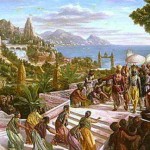 |
|
Written By: Kayalvizhi “When the southern ocean boiled over and seized the land, fine men, graceful women, and beautiful people, shapely colorful birds, animals and other living beings all suffered and perished. Temples, mansions and palaces, renowned Tamil libraries and the rare arts, colleges and schools, assemblies and meeting houses, market places and port facilities, homes, gardens and playing fields, all disappeared into the ocean.” Mutthuvirasami Naidu eloquently describes the destruction of Lemuria by ocean waves. Lemuria, also known as Kumarikandam remains a point of fascination and enhancement of Tamils everywhere. From the Silapathikaram, a Sangam literature, to modern writings, references have been made to Kumari Kandam and cruel sea that destroyed it. Kumari Kandam was a continent which extended east to Australia and in the West to Madagascar. Its inhabitants were the Tamils before it was consumed by ravaging waves. The volcanic eruptions paired with violent raging waves resulted in submerging Kumari Kandam. Kumari Kandam was Tamil land. It was the birthplace of our ancestors.Today, Tamil scholars who try to piece together the puzzle of the missing continent ask the question, what did we lose through Lemuria? The name itself, Kumari Kandam, meaning virgin continent/land was originally referred to locally as Kumari Nadu. Later, it became Kumari Kandam to Tamils. Its English reference, Lemuria, has a much more colonialist naming. Lemuria, was named by English zoologist Philip Sclater in 1864 after the monkey-like lemurs which he felt inhabited the land. He referred to Tamils who inhabited the land as beastly and lemur looking, and thus the name Lemuria was born. Tamils, not accepting Lemuria as a respectful name, continue to refer to this lost continent as Kumari Kandam. The name itself suggests that Kumari Kandam was a virginal, untouched, unviolated land – once which gave birth to the ancient Tamil civilization. The loss of our land and culture through Kumari Kandam has affected our influence and survival. Scholar A. M. Paramasivanandam once said, “If today our ancient Tamil land and ancient Tamil learning had survived, we would have ruled the world from Kumari to the Himalayas!” Our ancestors once rules the vast continent of Kumari Kandam, but today, we have been confined into relatively small space – that too which is being appropriated away from us. The interest of Lemuria was sparked in the 1890s, when Tamil intellectuals first started to piece together European geographies with Tamil history, language and literature. It was during this period that Tamil intellectuals began to recognize Kumari Kandam as the birthplace of Tamil language, literature and culture. Kumari Kandam was a continent we Tamils ruled, our literature, culture and language thrived in our own land. The imagination and fascination of Kumari Kandam will continue. However, we need to be the ones to undercover our history. With a renewed interest by Tamils into roots and history, maybe we may learn more of our history. Our history, much of it burned in the Jaffna Library, other scribes are locked up in libraries and scribes un-deciphered – at the Roja Muttiah Library now owned by American Universities and other undetected books. Maybe these artifacts can tell the tale of Kumari Kandam and more about our Tamil history. What happened to the history of Kumari Kandam?? Will we find out? |

